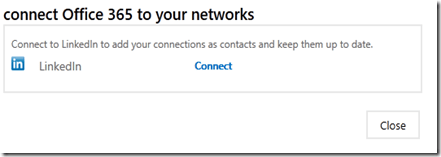Once a month I take a look back over what I find the most interesting posts from the same month in previous years. Here’s what I found interesting when I delved into the archives.
2012
Doing SharePoint no favours – https://blog.ciaops.com/2012/05/doing-sharepoint-no-favours.html
In this post I highlight how, in my opinion, Microsoft had ‘dumbed’ down SharePoint on the Office 365 P plan far too much. They had left out or hidden many of the best features of SharePoint. Doing that, I didn’t think, would really drive the adoption of SharePoint. I am glad to say things have changed with the new (Wave 15) version of Office 365 and P Plans.
2011
Locked SharePoint site – https://blog.ciaops.com/2011/05/locked-sharepoint-site.html
One issue that does arise with SharePoint sites on premise when a backup fails is that the site becomes locked. This is because it is put into ‘read-only/locked’ mode while the backup is taking place. This post details how to unlock a site after something like this happens.
Erky Perky – https://blog.ciaops.com/2011/05/erky-perky.html
This post details how all updates to SharePoint 2010 need to have a manual command line operation run to complete. If you don’t run this then you are not updating your SharePoint 2010 site.
2010
SharePoint 2010 on SBS 2008 – Yes but why? – https://blog.ciaops.com/2010/05/sharepoint-2010-on-sbs-2008-yes-but-why.html
After a series on posts on how you can get SharePoint 2010 Foundation running on SBS 2008 I step back and look at the business reasons why this is probably not such a good idea.
Sweat – https://blog.ciaops.com/2010/05/sweat.html
Here I look at the fact that success is all about working beyond the average. If you want to improve your physique then you need to exercise. Likewise, if you want to improve your business you need to work hard. Simply doing the same every day leads to mediocrity and places you and your business at risk.
2009
Distractions– https://blog.ciaops.com/2009/05/distractions.html
If you are frustrated that you aren’t getting things done then I would suggest you examine whether you are permitting distractions to syphon you time and productivity away.
Complaint handling – https://blog.ciaops.com/2009/05/complaint-handling.html
Does your business have a formal process for handling complaints? Most businesses treat complaints with contempt, however they are some of the greatest sources of feedbacks and can easily be converted into raving reviews. However, to do this you should have a formal process in place.
2008
Why people don’t use SharePoint – https://blog.ciaops.com/2008/05/why-people-don-use-sharepoint.html
My thoughts on why people don’t use SharePoint and what can be done to overcome this.
The relationship bank – https://blog.ciaops.com/2008/05/the-relationship-bank.html
Dealing with others requires a relationship and in this post I share my thoughts on how you can ensure that your relationships can have greater than normal chance of success.






















